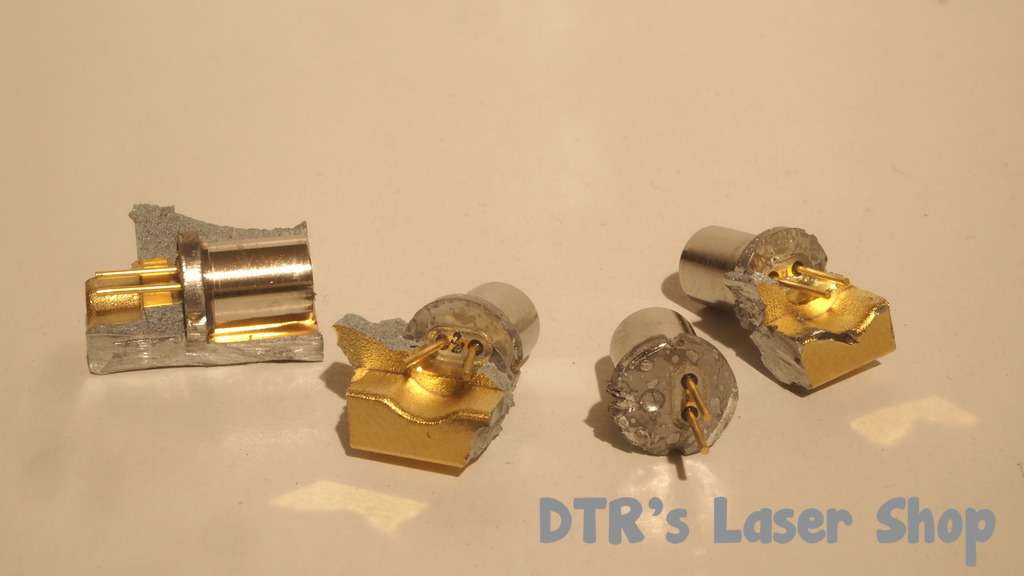Todays diode dies are not bonded with just indium. They are welded on with some High temp Stuff.( I Dont know exactly what the metal composition are but its not just pure indium anymore. I think its some mix of Nickel and other stuff)
The diodes that still use pure Indium to mount the dies are typically the cheap C-mount 808nm/650nm/635nm etc diodes. Also some 9mm 808nm diodes also still use indium that you see are like this:
and or 808nm TO-5 diodes that have this style of a mount is sometimes still used with indium:
Also of course there are the older diodes from the 90's that used just indium. Things have changed since then though. It is very hard to find todays diodes in 5.6mm,3.8mm,9mm etc that use indium only.
You can kinda tell if they are indium mounted or not if you look and see how the metal has reflowed around the die. Usually if its indium it has reflowed far past out away from the die.
The 9mm blue diodes of today will not desolder at the low temp of 160C which is where pure indium melt. Ive tried it in a project that i had tried to do and failed because i had to hit the diode with a torch to remove the die.LOL:crackup: (It was a dead diode i tried it on first)

The amount of heat the is required to break the weld to remove the die is so high that its impossible to do without damaging the die on a hobbyist level. The dies are welded at the manufacture in a quick burst (Micro seconds or even faster)and thats how they can get away with it. I have a video somewhere on it i will try to find it.

So if this metal bond around the diode that is holding the diodes in place in that large array copper mount is pure indium then you should not have any issue with a toaster. However i suggest you use a Hot plate instead. Just note that the Indium when melted will become solder like and make the back of the diode or where ever it reflows to bumpy from the indium wanting to gather together like a solder ball/bump.
This stuff around the diode that is holding it in looks to be indium to me.
However, It also looks like something else. Its so nicely bonded to everything it looks like they might of used nano foil to do the bond. Which works different and is a different metal Aluminum and Nickel. If thats the case it will be much hard to remove and melt and deal with if you can re melt it. (Goggle nano foil. There is videos out and its pretty interesting. I worked with some of this stuff about a year ago.Its Great.
As another Note. If its indium you can also use Cooling to break the bond. But you would need to get to ~40C that might make the indium brittle. (I had this happen to me where i had a TEC mounted with indium to a copper block and the bond when chilled to ~30C failed and came loose) That might be another option. No garantee but its an idea.




















